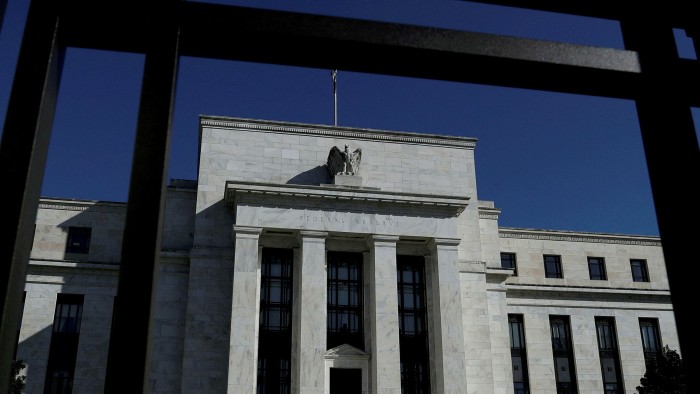Daylight overdrafts must lose their stigma

Roula Khalaf, Editor of the FT, selects her favourite stories in this weekly newsletter.
Anyone covering financial markets in 2007 and 2008 will recall how the market went from not caring very much at all about arcane goings on in money markets, to being totally obsessed.
After central banks threw the proverbial liquidity kitchen sink at the global monetary system to fend off the global financial crisis, public scrutiny over key market rates like three-month libor or the overnight funding level remained. The irony is, by this point the rates had become far less indicative of strain in the financial plumbing system. The quantitative easing programme of asset buying by central banks to support markets had, by design, damped much of their information value.
Investors soon moved on to tracking funding rates for collateralised loans and others for clues about market stress.
However, they remained strangely uninterested in the goings on in an even more arcane world of intraday dollar funding that was until recently largely unnoticed by liquidity watchers: so-called “daylight overdrafts” for when banks borrow more than they have on deposit with the Fed.
In February 2020, the Fed quietly and inexplicably suspended tabulating usage of the facility.
But judging by the scale of interventions that were directed at this section of the market by the Federal Reserve in the aftermath of Covid-triggered panic in March 2020, the timing of the suspension proved convenient for the Fed.
As the crisis hit, the Fed moved to temporarily suspend restrictions and fees on the use of daylight overdrafts, pointing to the importance of the facility. The initial six-month suspension was later extended until March 31, 2021. Only now, thanks to the publication of a Fed-authored paper this November, has a sharp spike in the usage of the facility during the stressed period been revealed. The plot also thickens.
On May, 2021, the Fed put out a request for comment about potential changes to its original Policy on Payment System Risk (PSR), which had, until Covid struck, been aiming to impose greater restrictions and caps on daylight overdrafts.
The new proposals, however, point to a change of heart about the strictness of some of these measures. Restrictions on collateralised overdraft borrowing, in particular, have been slated to be removed. Doing so, the Fed says, “could improve the effectiveness of Reserve Bank intraday credit as a liquidity tool without a significant increase in credit risk to the Reserve Banks and the payment system”.
To understand the significance of this, one needs to look to the facility’s historic role in bridging the world of payments and system liquidity.
As Credit Suisse’s Zoltan Pozsar has previously noted, “the payments system used to be a credit system where banks routinely incurred daylight overdrafts”. As long as banks settled outstanding positions by the end of the day, there was little stigma associated with use of the facility.
But the ordinariness of this also meant that the steady build-up of intraday overdraft use in the years preceding the global financial crisis, which grew to well over $180bn in 2009 from around $60bn in 1996, went largely unnoticed and unstudied. Then QE arrived on the scene and usage of the facility dried up — pushing goings on in the market even further from the attention of the market.
In the interim something quite monumental happened: overdraft usage started to become stigmatised.
The scale of that stigma wasn’t revealed until the Fed began to think seriously about an unwinding of its extraordinary liquidity support in 2019. It did so by testing the parameters of just how much of a reserve balance the system needs to remain functional. By September 2019, a blowout in the repo market showed that excess reserve balances of banks at the Fed were much higher than anyone had really anticipated.
In Pozsar’s mind the affair showed that under Basel III bank regulation the funding of imbalances in the payments system had morphed from being credit funded to pre-funded. This made the system operate more like a token market, where all funding already pre-exists, than a classic fractional reserve system.
A clue to the scale of the issue came when JPMorgan’s boss Jamie Dimon admitted in October 2019 that the bank was no longer willing to part with cash that it held in its Fed checking account on an intraday basis because of the regulatory costs of doing so. Before Basel III, JPMorgan had been one of the largest users of daylight overdrafts.
What the Fed’s proposed amendments to its PSR policy signal is a strong desire for the facility to lose the stigma it has attracted. Only then can the central bank properly wean the broader financial system off excess reserves.
izabella.kaminska@ft.com
Comments